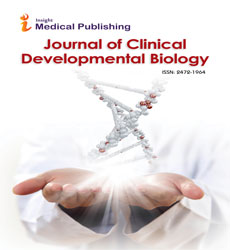Endocrinology Congress 2019: Association between omentin and chemerin levels and their changes within one year in non-morbid overweight and obese adults
Vijja Sillana
Department of Biotechnology Narina Vidyapeeth Engineering and Management Institute, Kanpur, India.
Received Date: 2022-06-10 | Accepted Date: 2022-06-14 | Published Date: 2022-06-18
Abstract
Obesity is typically related to diabetes mellitus type 2, although it has become a serious problem even among type 1 diabetics. Diabetes mellitus type 1 is a chronic disease characterised by absolute lack of insulin, resulting from autoimmune destruction of the pancreatic β-cells. This malfunction interferes not only in carbohydrate metabolism but also in that of fat and protein, and leads to a wide range of multisystem abnormalities with a common etiopathogenesis of formidable macro- and microvascular disease. In obese diabetics, redundant fat tissue is associated with insulin resistance, dyslipidemia, hypertension, endothelial dysfunction and a pro-inflammatory state. Obesity can thus markedly contribute to the development of diabetic complications. In these effects adipose tissue-secreted cytokines/adipokines are implicated. Omentin-1 (intelectin-1, intestinal lactoferrin receptor, endothelial lectin HL-1, galactofuranose-binding lectin), a 313- amino acid peptide, is an anti-inflammatory adipokine preferentially expressed in stromal vascular cells of visceral adipose tissue. It is suggested that this substance makes an important contribution to the physiological difference between visceral and subcutaneous adipose tissue. It is abundant also in human vasculature, the small intestine, colon, thymus and heart. Omentin-1 is the major circulating form; it also has a homologue designated as omentin-2 and their genes are localised adjacent to each other at 1q22-q23 in the region linked to diabetes mellitus type 2. Both omentin homologues in circulating form correlate with expression in visceral fat tissue. Omentin-1, as with adiponectin, can activate 5′-AMP-activated protein kinase and endothelial nitric oxide synthase. Via this activation, omentin-1 is essentially involved in cellular energy homoeostasis and vascular tone regulation
Open Access Journals
- Aquaculture & Veterinary Science
- Chemistry & Chemical Sciences
- Clinical Sciences
- Engineering
- General Science
- Genetics & Molecular Biology
- Health Care & Nursing
- Immunology & Microbiology
- Materials Science
- Mathematics & Physics
- Medical Sciences
- Neurology & Psychiatry
- Oncology & Cancer Science
- Pharmaceutical Sciences
